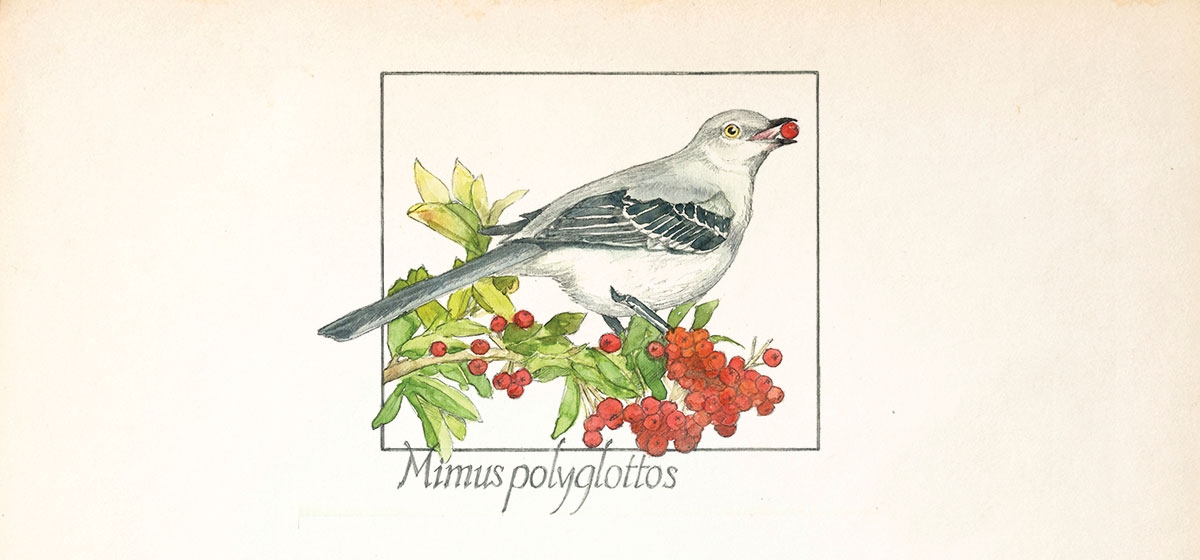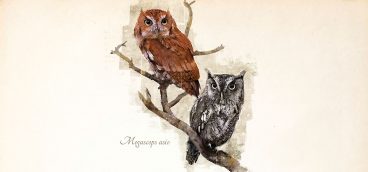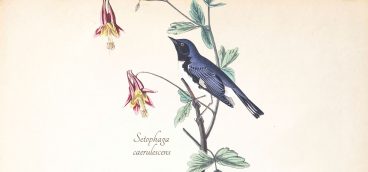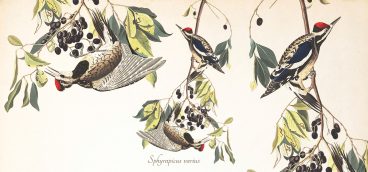Give a Little Whistle

It’s not until chapter 10 of Harper Lee’s famous novel that we are told of the magic of mockingbirds. Atticus Finch, lawyer and father extraordinaire, says, “Shoot all the bluejays you want, if you can hit ‘em, but remember it’s a sin to kill a mockingbird.” Benevolent Miss Maudie explains, “Mockingbirds don’t do one thing but make music for us to enjoy…” And that’s true. Northern Mockingbirds mind their own business most of the time, perching high on a branch or treetop, fencepost or phone wire. But boy, can they sing!
With a Latin name that says it all, Mimus polyglottos is a many-tongued mimic. If you hear the songs of a dozen birds in quick succession, or a car alarm in an unexpected location, or endless birdsong at midnight, it’s likely a mockingbird. Visiting my home ground in Atlanta, I once whistled the opening bars of “Dixie” to a mocker, who obligingly whistled it right back. The species counts both genders as songsters, but it’s the males who are the stars, mastering some 200 songs in a lifespan, which can be up to 15 years. They sing in spring, summer, and late into the fall, only to take the winter off. In fact, mockingbirds are such renowned singers that they often were captured and sold as cage birds until the early 1900s, negatively impacting their Eastern Seaboard populations. Since federal protections were enacted in 1918 for all migratory birds, their numbers have rebounded.
Mockingbirds are found year-round throughout the United States, north into Canada, and as far south as Central America, with stable populations coast to coast. They forage on grassy open ground as well as shrubs and hedges. They’re insectivores all summer but frugivores in fall and winter. That’s why they don’t typically come to feeders: no seeds, please.
About the size of a robin, mockingbirds are gray-brown on top and a lighter gray underneath. Their most striking field marks are white, flashy wing patches and the tail feathers at the outer edge, also white. Mockingbirds display both, sometimes in purposeful harassment, sometimes just to make a show. Besides their voices, these are their most distinguishing features.
Female mockingbirds lay 2-6 eggs two or three times each breeding season in a grass-lined cup nest. Eggs are pale blue or white with rufous splotches. Like many birds in our area, they incubate for about two weeks and hatchlings fledge a fortnight after birth.
Look and listen for these talented vocalists of the avian world. They have the voice and all the panache of a superstar, but they’re a species you may have just overlooked ‘til now.





